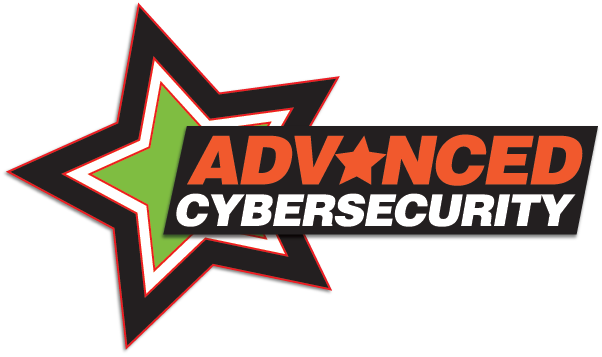Advanced Cybersecurity & Compliance Solutions
Managed Cybersecurity & Regulatory Compliance Services
With Our Shoulders, Compliance Doesn’t Have to Be Complicated:
Harden Your Defenses.
Meet Compliance Requirements.
Reduce Risk with Confidence.
20+ Years Providing Cybersecurity & Compliance Consulting for Montana Businesses
Cybersecurity Breaches in Montana - Knowing the risks
We often only hear of major cybersecurity breaches. As a result, there seems to be a disconnect between the amount of emphasis put on this versus what we know about in our community.
For more info on dealing with cybersecurity incidents, check out First Call’s Cybersecurity
Incident Response approach.

Table of Contents
Let's Get to Know Where You ARe
Is your business having an active crisis? Don’t waste time.
Cyber Security Partnerships that Suit Your Needs
To get started, What is your Role?
Are you an IT Director looking to strengthen your team and reinforce your cybersecurity efforts? Look no further!
Our Co-Managed Cybersecurity offerings are designed to complement and enhance your existing capabilities, making us the perfect addition to your organization. We’re not here to replace anyone; we’re here to support you and provide a valuable influx of resources. Let us join forces and work together to protect your organization.
Reach out today to learn more about our friendly and personable solutions that will help you excel in your role and ensure the utmost security.
Business owners and C-Level executives deserve a trusted partner who can alleviate the burden of cybersecurity from their plates.
We understand the challenges you face, from ensuring compliance and managing cybersecurity questionnaires to maintaining a reputable business and safeguarding against data loss. You need solutions that are effective and reliable.
Discover how our tailored cybersecurity offerings can meet the unique needs of business owners and C-Level executives like you.
Let us provide the peace of mind and protection you deserve. Learn more about our comprehensive solutions today.
Most At Risk Montana Industries for Cybersecurity Threats
Is Your Industry At Higher Cyber Risk?
The short answer is “Yes”. The value of the data, the cost of downtime, or the trust factors associated with the relationships they manage cause some organizations to face higher risks.
Industries facing higher risk include:
- Government
- Healthcare
- Banking, Credit Unions & Finance
- Schools
- Criminal Justice
- Manufacturing

Variables That Affect Your Cyber Needs
Business Size:
The more employees an organization has, the greater the risk controls needed and the greater the impact should an incident occur.
An organization with 20 – 50 employees needs to have a strategy.
50-100 employees the depth and complexity will increase.
100-200 same thing, and so on.
Assets & Asset Value:
This is where all frameworks start with questions about your data, their value, and impact on your business should they be affected.
In our experience, any organization using computers, email, and the internet has risks. Everyone needs fundamental protections in place, what we refer to as blocking and tackling.
As you grow larger or simply have great risk due to your industry, regulations, or asset value you must go beyond the blocking and tackling to advanced cybersecurity measures.
Let's Talk About NIST Cybersecurity Frameworks & Compliance Mapping
Identify
Protect
Detect
Respond
Recover
Clear Cybersecurity Guidelines
Advanced Cybersecurity and NIST
Our goal is to break conventional thinking that Advanced Cybersecurity as being too hard or too technical or too expensive. Advanced Cybersecurity boils down to having:
The Right People,
The Right Processes And,
The Right Tools In Place
Those people, processes, and tools are in place to Identify, Protect, Detect, Respond, and Recover, otherwise known as the 5 Pillars of the NIST Cybersecurity Framework.
NIST, the National Institute of Standards and Technology, was tagged by the Federal powers that be to establish guidelines for organizations not already regulated by other frameworks to manage cyber risk. They developed the 5 pillars to encompass the cybersecurity ecosystem.
NIST is one type of cybersecurity standard. Depending on your industry, the regulatory compliance requirements will vary — from HIPAA and FERPA to PCI-DSS and CMMC.
For example, in the Healthcare industry, the Health Insurance Portability & Accountability Act has created another set of standards for those organizations collecting patient information.
Other highly regulated industries aside from Healthcare include government, schools, hospitality, and banking. Most of these organizations already have regulatory bodies and/or frameworks:
Achieving and maintaining regulatory compliance is more than a legal requirement — it’s essential for building trust, avoiding penalties, and maintaining operational resilience.
Our Cybersecurity Solutions Advisor will help you develop a strategy that aligns with the 5 pillars of the NIST framework, while ensuring compliance readiness, documentation, and security audit support. The goal of our advanced cybersecurity offering is to have the people, processes, and tools in place to create, refine and manage those 5 pillars.

Cyber Security Basics You Should Know
Cybersecurity Basics & Compliance Readiness
What Blocking and tackling Should all organizations with more than 20 employees have in place?
Here is a quick list of the cybersecurity protections we would recommend for any industry/organization at a minimum if you have more than 20 employees commonly using the internet/technology in their work.
Do you feel comfortable or confident with this list? Or does it feel overwhelming? Don’t worry, we can help.
- Advanced Antivirus
- VPNs for remote workers and sites
- Basic monitoring/alerting
- Internet content filtering
- Basic password hygiene practices/controls
- Multi factor authentication
- Advanced firewall
- Wifi Encryption
- Wifi Password protection
- Basic Windows Patch Management
- Basic Annual Security Gap Audit
- Encrypted Backups (preferably Cloud based)
Advanced Cyber - Beyond the Basics
Advanced Cybersecurity
For organizations with advanced protection needs First Call recommends some additional services provided by 3rd party cyber security companies like First Call.
Additionally, any cyber security consultant will highlight human error/user behavior as the number one security gap.
Given that fact, more controls are needed as well as security awareness training and testing.

Recommended list:
- Dark Web Monitoring Services
- Security Awareness Training and Testing
- Phish Testing and Reporting
- Password Managers either user based or centrally managed
- DNS Protection
- Managed Detection and Response (MDR)
- Security Policies and End User Agreements
- Advanced Breach Detectionv
- Security Log Auditing
- Annual Security Gap Audit
The above services should be professionally onboarded and managed to ensure security is not a snapshot / point in time service but rather an ongoing managed service.
Let's Talk About Choosing the Right Solution for You
Hiring In-House vs. Outsourced Cybersecurity Services
In-House cybersecurity or outsourced?
In-house Cybersecurity
- Tailored to Your Organization
- Quick Response and Flexibility
- Deeper Knowledge of Internal Systems
- Enhanced Trust and Confidentiality
- Continuous Skill Development
Outsourced Cybersecurity & Compliance Services
- Access to Expertise
- Cost Saving
- Scalability and Flexibility
- 24/7 Monitoring and Support
- Advanced Technology and Tools
- Compliance and Regulatory Requirements
Cyber Costs Ranges For Your Business
How much does cybersecurity service cost?
Managed Service Providers, Cybersecurity Agencies and Managed Security Service Providers are going to have packaged services ranging from $10 per user per month to $200.
Many of the solutions out there are designed for enterprise or medium businesses (more than 200 employees) so be sure to engaged with vendors focused on smaller organizations with smaller budgets in mind.
Organizations can also invest in a standalone risk assessments. Costs vary but what you will find is with consultants it will be higher because that is where they are making their money – in the assessment, not in the ongoing services to maintain an organization’s security posture.
Leaders need to manage the risks affordably and many organizations with less than 200 employees struggle with this because many of the tools, services and providers are priced for larger organizations.
Keep it simple: what will the blocking and tackling cost us?
What advanced services do we need and how much does that cost?
Perform this exercise all while keeping in mind the threat is real and organization can no longer afford to do little or nothing.
Remember this:
The higher the price the more:
- Gaps their approach addresses.
- Professional services that are bundled in.
- Hours of coverage involved.
- Risk they are inheriting when an incident requires response and recovery services.

Knowing The True Cost of Cybersecurity Breaches
Why Doing Nothing Costs More
Legal & Compliance Implications
A construction company in Maine, Patco Construction, had $590,000 transfered away after intruders infiltrated their systems. Some of that money was recovered, however on-going legal suits between Patco and their banks lasted for years after the cybersecurity incident which caused further strain on the business.
Damaged Reputation
In another incident, Wright & Filippis, a health-care company, was involved in a cybersecurity incident that involved patient personal health information (PHI) but they were unsure what happened to it or how it was used. Aside from the unknown consequences of leaked PHI, Wright & Filippis was required by law to disclose this information so those potential affected could take the appropriate actions.
Financial Impact
Montana organizations are coming to us for help. Real dollars are being stolen, entire server and workstation fleets are being held hostage by ransomware, reportable data breaches, organizations having to disconnect their business from the internet for days and weeks.
The ramifications are real and extensive.
Proactive Steps You Should Be Taking
Proactive Cybersecurity & Compliance Management Starts
With an Incident Response Plan
Do you have an incidence response plan?
Having a solid incident response plan is absolutely vital to protecting your organization in the face of cyber threats. Think of it as your organization’s roadmap for handling cybersecurity incidents, providing clear instructions on what to do when things go wrong. It’s like having a trusted playbook that helps you navigate through challenging situations, such as data breaches, ransomware attacks, or network intrusions.
1. Documentation and Accessibility:
- Do you have a documented incident response plan that outlines the steps to be taken during a cyber incident?
- Is it easily accessible to all relevant stakeholders within your organization?
- Has the incident response plan been reviewed and approved by management and key stakeholders?
- Is it regularly updated to address emerging threats and changes in your IT environment?
2. Incident Classification and Escalation:
- Does your incident response plan define a clear process for classifying and categorizing different types of incidents based on their severity and potential impact?
- Are there well-defined escalation procedures in place to ensure that incidents are promptly reported to the appropriate individuals or teams within your organization, such as the IT department, management, or legal counsel?
3. Incident Response Team:
- Have you identified and designated a cross-functional incident response team responsible for executing the incident response plan?
- Does the incident response team consist of individuals from various departments, including IT, legal, communications, and human resources, with clearly defined roles and responsibilities?
4. Communication and Coordination:
- Does your incident response plan outline communication protocols to ensure effective coordination among different teams and stakeholders during an incident?
- Are there established lines of communication with external parties, such as cybersecurity service providers, insurance providers, law enforcement agencies, and regulatory bodies?
5. Technical Response and Recovery:
- Does the incident response plan detail the technical steps to be taken to contain, investigate, and remediate the incident? Are there predefined procedures for evidence preservation and data recovery?
- Have you conducted tabletop exercises or simulations to test the effectiveness of your incident response plan and identify areas for improvement?
6. Continuous Improvement:
- Do you have mechanisms in place to capture lessons learned from past incidents and update your incident response plan accordingly?
- Is there a process for regularly reviewing and updating your incident response plan to reflect changes in your organization’s infrastructure, systems, or regulatory requirements?
Remember, having a cybersecurity incident response plan is like having a reliable guide by your side, helping you navigate the complex world of cybersecurity incidents. If you don’t have one yet, it’s strongly recommended to start developing it as soon as possible. Your organization’s resilience and ability to protect itself depend on it.
Do You need cyber insurance?
The reason cybersecurity insurance exists is because real risk is on the rise and enough people wanted to transfer some of the risk to an insurance carrier. If you are in a high-risk industry, your employee count is rising and your dependency on data/IT is increasing, then cyber insurance is a must-have.
When shopping for coverage, think about what risk you are looking to transfer to the carrier.
Here a couple of examples…
Cyber Terrorism
A rural electric co-op might want cyber terrorism coverage because they are worried about State actors taking down the electrical grid they manage.
Response/ Remediation
A bank or credit union should be thinking about full response and remediation services as undoubtedly forensics, call center services, public relations services, and costs will all be required.
Extortion/Ransom
The average company might simply be concerned with extortion/ransom payments and recovery services.
Regulatory Defense
A medical facility should consider regulatory defense and penalty coverages to avoid having to pay the legal defense fees and penalties in the event of a patient privacy records breach.
Is Cyber Insurance Worth It?
Weighing the Pros and Cons and Its Role in Your Compliance Strategy
Get advice from your cyber security consultant. (hint even a basic risk assessment will help steer you)
Work with your insurance agency. Always avoid competing carriers or duplicate policy coverages.
Pros:
- Financial
- Protection
- Risk Transfer
- Incident
- Response
- Support
- Compliance
- Assistance
Cons:
- Coverage
- Limitations
- High
- Premiums
- Complex
- Claims
- Processes
- Risk
- Perception
Advanced Cyber Services
What is included within an Advanced Security Agreement?
Endpoint (PCs, Servers, and Macs) Detection and Response (EDR)
- Deploy EDR
- Configuration of EDR
- Monitoring of EDR
Desktop Application Patch Management
- Automatic updating of desktop applications supported by Desktop Application Patch Management software.
SOC Response Desk
- Remote resolution of events during First Call's operating hours either on a T&M or Fixed Price basis. The billing approach is dependent on other IT Services agreements with First Call.
- Support for compliance reporting, audit readiness, and regulatory documentation
Security Information and Event Management (SIEM) / Security Operations Center (SOC) / Managed Detection and Response (MDR)
- Configuration of devices for SIEM log storage.
- Automatic collection of logs from devices configured to use the SIEM.
- See quote for log retention duration details.
Remote Monitoring & Alerting (8×5 or 24×7)
- Monitoring of security events for devices connected to the SIEM.
- Response to generated alerts based on severity.
- Alerting in accordance with customer provided incident response plan.
Security Alignment Manager (SAM) — Compliance Oversight & Risk Reduction
- Pre-scheduled SAM sessions
- IT security standards auditing
- Proactive alignment with standards
- Risk reduction
- Security steering input
3rd Party IT Audit Participation
- Virtual Chief Information Security Officer (vCISO) audit participation.
- vCISO review and recommendations upon audit conclusion.
*Up to 4 audits per year
Virtual Chief Information Security Officer (vCISO)
- Cybersecurity Steering Meetings
- Onboarding
- Other advice, budgeting, solution quotes
- Completion of vendor due diligence package requests from 3rd parties for First Call or any of its vendors.
What Is A Security Alignment Manager (SAM)?
Think of a SAM like an auditor. They are regularly performing a review of your IT assets against cybersecurity standards. Finding the gaps, improving documentation, proactively reviewing the environment to reduce risk, improve standards alignment, documentation and proof for all involved.
This role involves understanding the organization’s devices, applications, networks, data, and users to ensure that the
appropriate cybersecurity measures are in place to protect them.
First Call’s SAM plays a critical role in ensuring that an organization’s cybersecurity program is aligned with its overall business strategy and is designed to protect its critical assets from cyber threats
Key Responsibilities of a Security Alignment Manager:
What Is A vCISO ?
Virtual Chief Information Security Officer & Compliance Strategist
First Call’s Virtual Chief Information Security Officer’s are our senior executives responsible for managing the overall security of our client’s information systems and data. Their primary role is to ensure that the organization’s information and data are protected from cyber threats.
Key Responsibilities of a vCISO:
- Developing and implementing an overall cybersecurity strategy and roadmap for the organization.
- Overseeing the development and implementation of cybersecurity policies, procedures, and guidelines.
- Identifying and mitigating security risks and vulnerabilities in the organization’s information systems and networks
- Managing the organization’s response to cybersecurity incidents and breaches
- Overseeing the selection and implementation of cybersecurity technologies, such as firewalls, intrusion detection and prevention systems, and security information and event management (SIEM) systems
- Ensuring that employees are trained on cybersecurity best practices and are aware of their responsibilities in maintaining the security of the organization’s information and date
- Collaborating with other stakeholders, such as the owners or executives to ensure that cybersecurity is integrated into the organization's overall strategy.
Our vCISOs play a critical role in protecting your data and aligning your business with industry compliance requirements, frameworks, and governance best practices. As cyber threats continue to evolve and become more sophisticated, the role of the vCISO becomes increasingly important in protecting an organization’s critical assets from cyber attacks.

Some of our happy customers


Ready to Get Started on Better Security?
Let's Talk About Your Security Gaps

Jayson Olthoff
Business Development Executive - First Call Computer Solutions
Meet with Business Development Director, Jayson Olthoff to discuss your IT, Cybersecurity, or Unified Communications needs!
Your organization has talent, we have it talent. Submit the form below To discuss how we can put our shoulders together!

